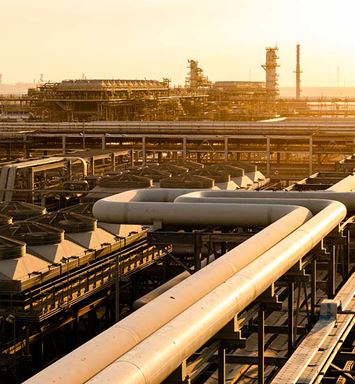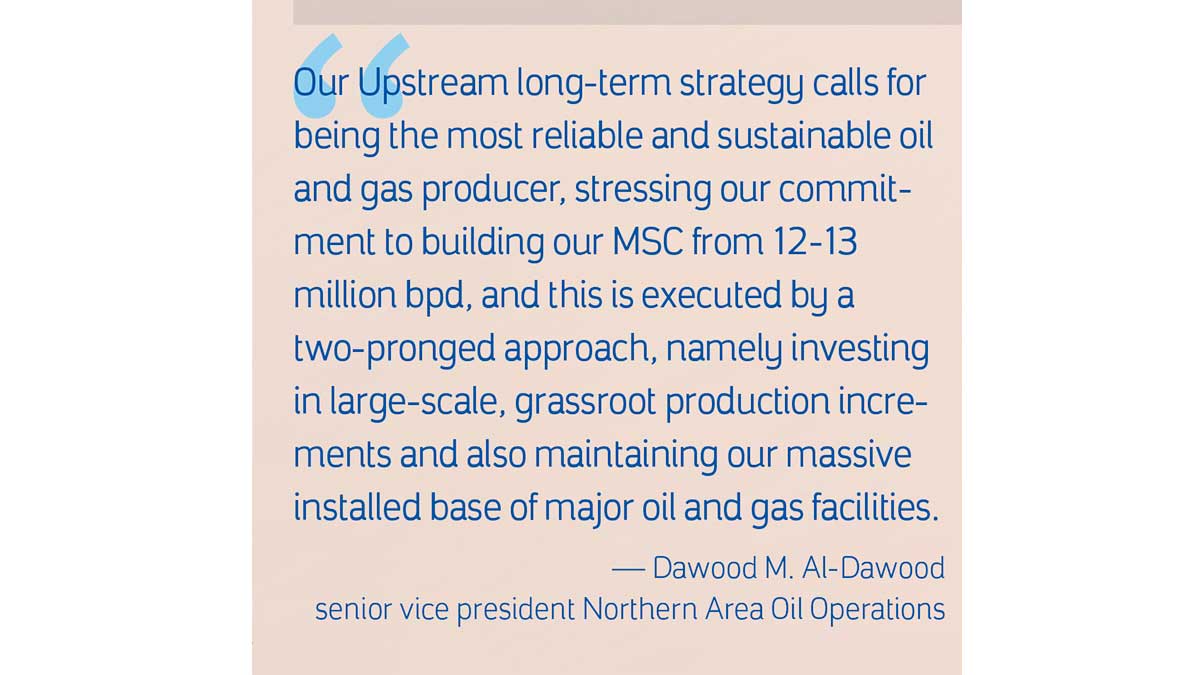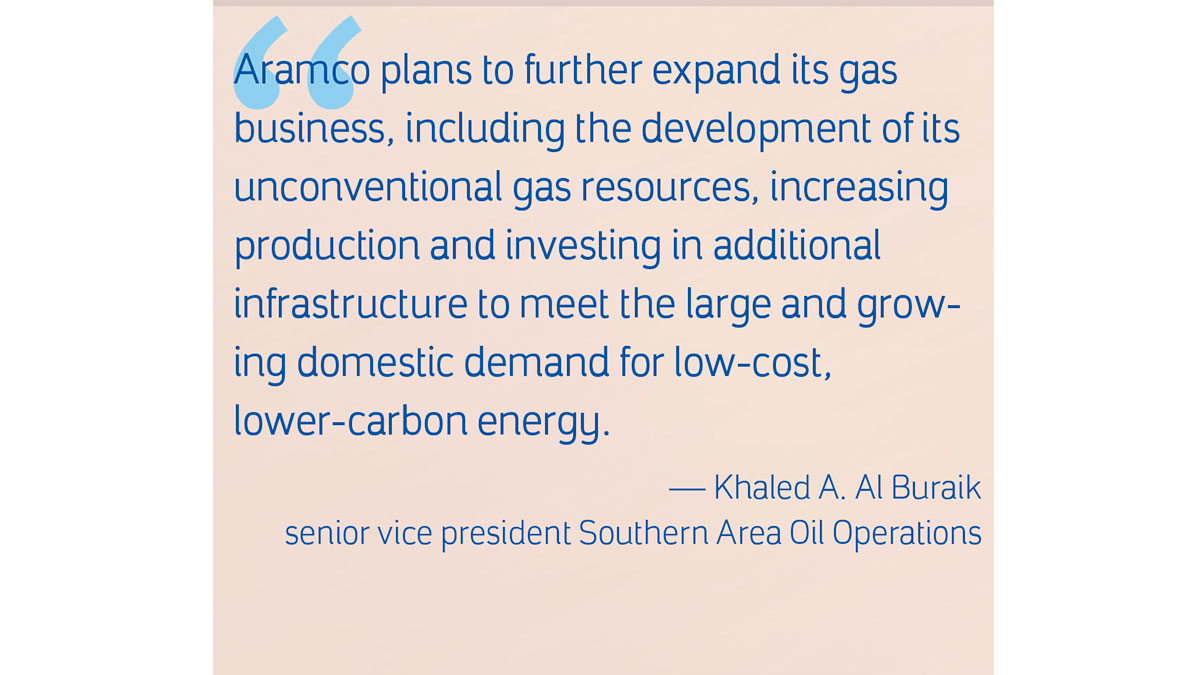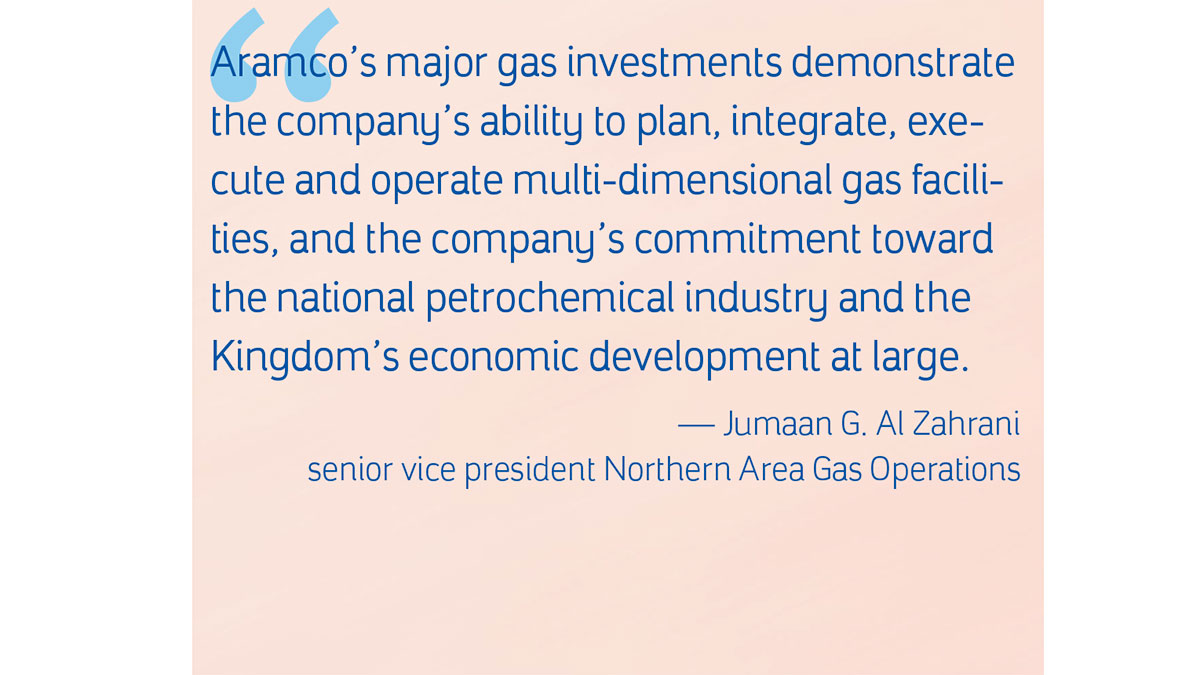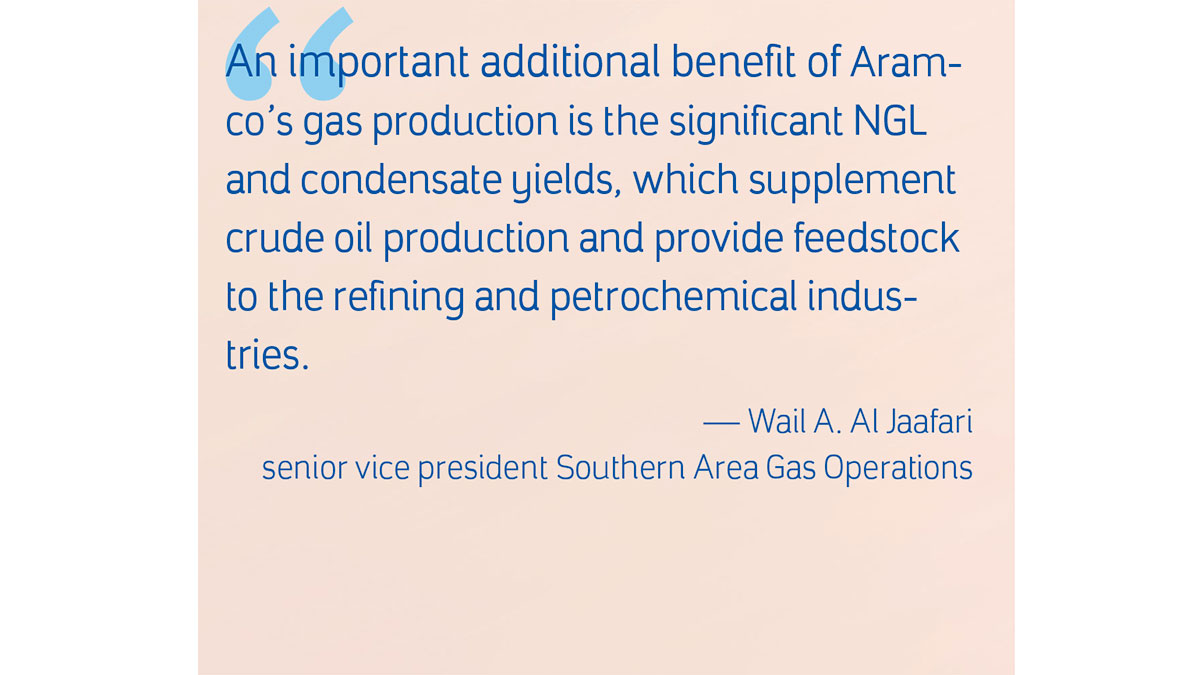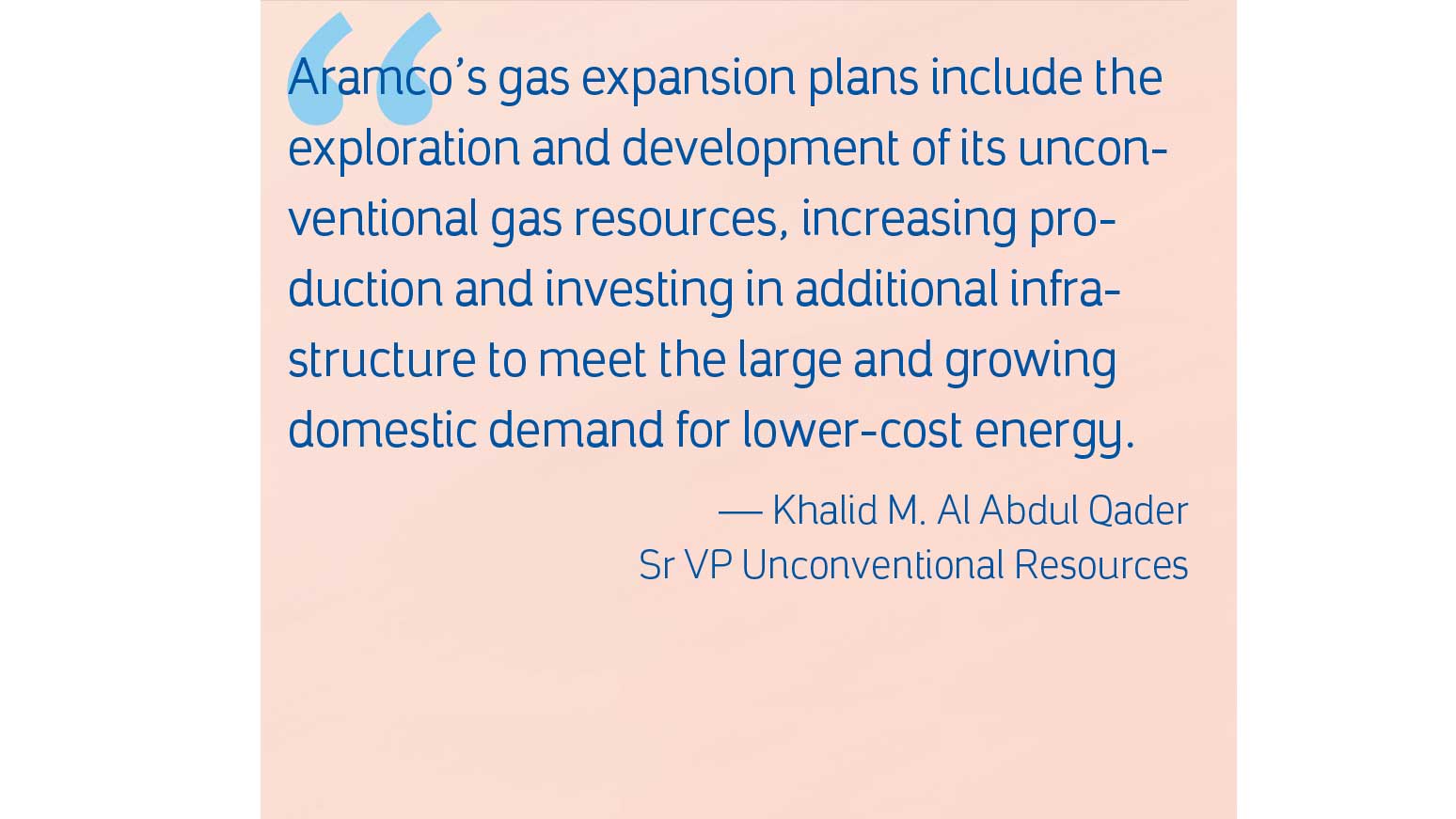Gas Portfolio
Investing to grow our gas portfolio key Aramco strategy
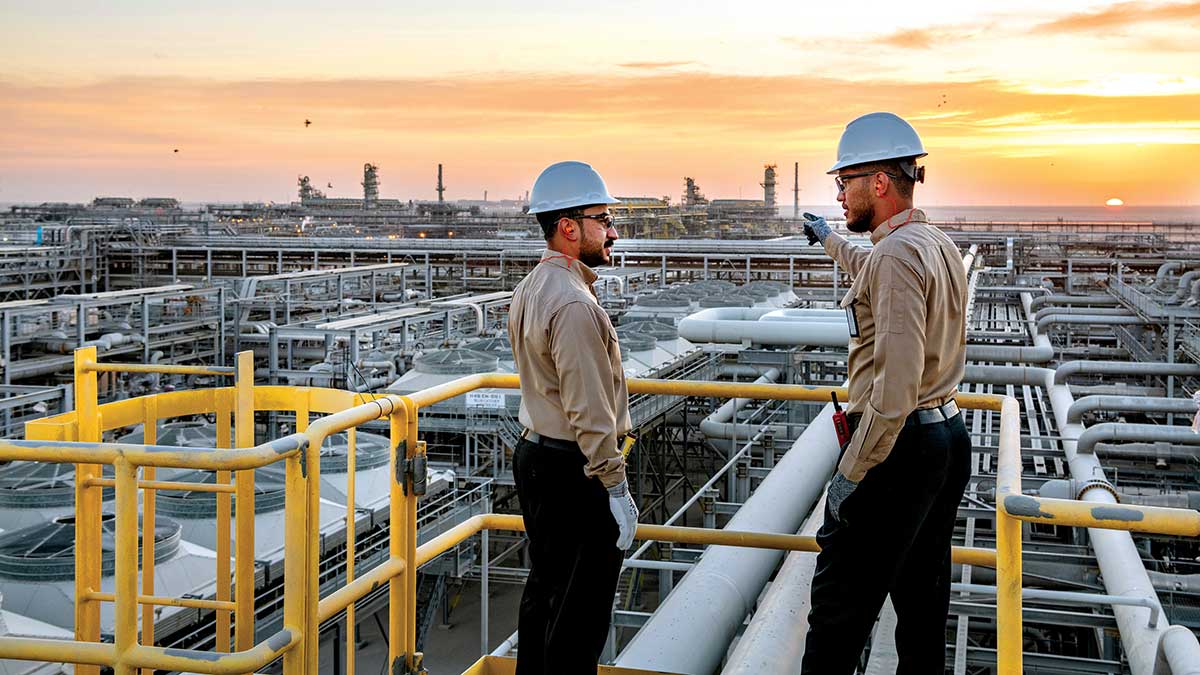
Global July 23, 2023 - By
Investing in gas allows Saudi Arabia to diversify its energy mix by cutting its use of liquids for power generation while increasing valuable feedstock for use in the petrochemical industry.
Aramco, operating for nine decades, thinks beyond oil price cycles.
We have embarked on one of the most significant energy-expansion plans in the global market.
The company believes oil and gas will continue to be part of the world’s energy mix for the foreseeable future.
Aramco, one of the lowest cost producers globally, also has one of the lowest upstream carbon intensities.
Gas pivotal for energy trilemma
Aramco’s growth strategy is focused on addressing the energy trilemma of reliable, affordable, and sustainable energy.
Our company’s largest capital spending in its history includes increasing gas production by more than 50% by 2030 (growth on 2021 levels of production).
Gas, once a waste by-product of oil production, is a simple and lower-carbon hydrocarbon, and considered an important piece in the energy mix for the world’s energy transition.
Our gas investment is key toward Saudi Arabia’s plan to diversify its energy mix by cutting its use of liquids for power generation, and builds on the company’s strategy to produce valuable feedstock for the petrochemical industry.
Nonassociated and associated gas
Aramco’s nonassociated gas fields vary widely in reservoir properties, depths, pressures, and compositions.
In general, the southern area around the Ghawar field has rich gas at moderate depths and permeability, while the northern offshore fields (Karan, Arabiyah, and Hasbah) have leaner gas in deeper reservoirs with high permeability.
Crude oil production provides a base load of associated gas, which is rich in liquids, and Aramco’s primary natural gas processing and fractionation facilities are located in Ghawar, and the northern and western areas of the Kingdom.
Gas production primarily feeds into the Master Gas System (MGS), an extensive network of pipelines that connects Aramco’s key gas production and processing sites throughout the Kingdom.
Gas for hydrogen feedstock
Aramco’s plans to expand its gas business include providing feedstock for blue hydrogen and blue ammonia production.
Our exploration activities during 2022 resulted in the discovery of two unconventional gas fields in the Kingdom’s eastern region.
Aramco’s MGS is currently undergoing an expansion.
The MGS Expansion Phase II had increased overall gas supply capacity from 9.6 billion standard cubic feet per day (Bscfd) to 12.5 Bscfd in 2020, to accommodate the increase in the Kingdom’s natural gas demand, including expansion of the East-West MGS to ultimately deliver 5.2 Bscfd to the central and western regions to support future utility and industrial development.
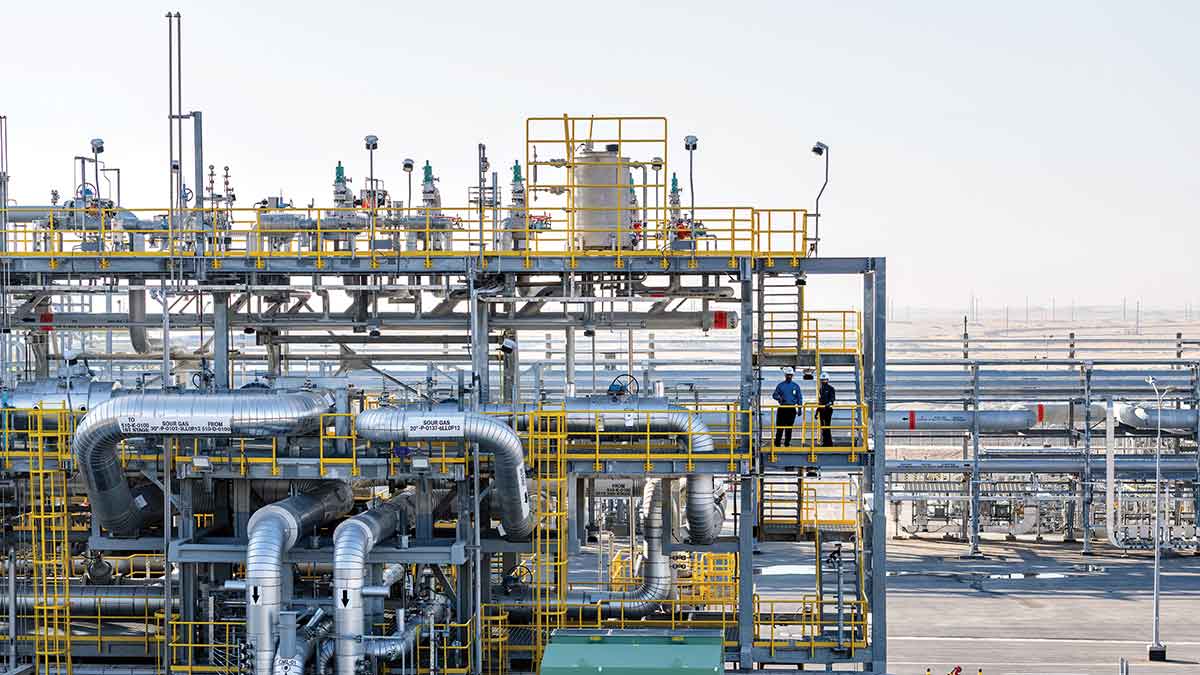
Nine Haradh and Hawiyah compression plants
In a remote part of the Kingdom’s southern desert, construction of nine gas compression plants is both improving and sustaining gas production by reducing choke pressure at the wellhead to 300 pounds per square inch gauge.
When a nonassociated gas reservoir begins to reach its plateau, its natural pressure decreases. To both improve and continue production of lower-pressure gas, wellhead pressure is lowered.
The gas compression plants — located approximately 100 kilometers apart — are a visually impressive example of just one corner of Aramco’s prolific resources base.
